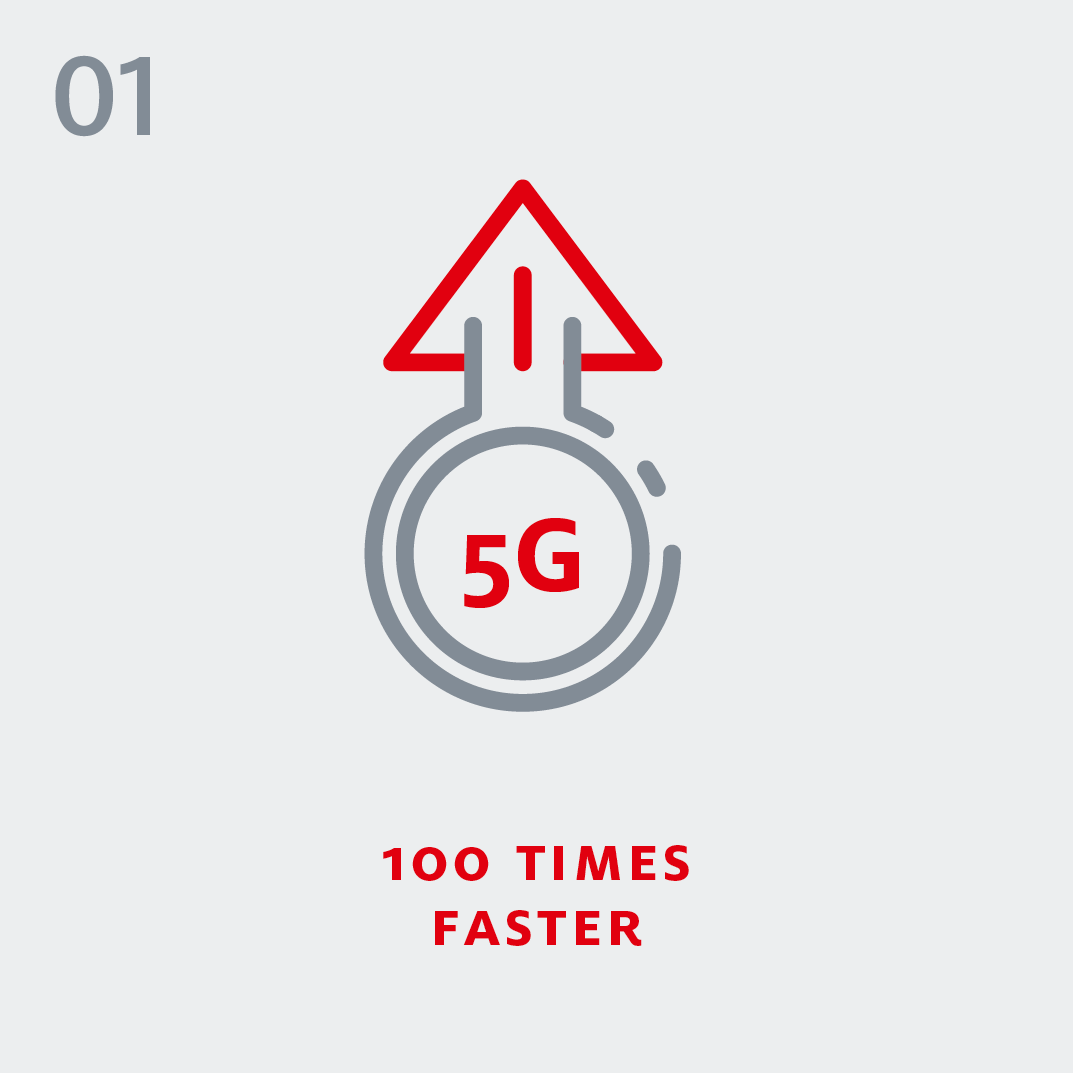By enabling round-the-clock updates and improvements, 5G will also open up opportunities for companies to adopt advanced manufacturing approaches. Factories will feature more sensors, cameras, drones and robots to increase efficiency and quality. Connecting the entire value chain – from raw materials through to waste disposal or recycling – will generate data that can be used to identify potential improvements. And in the healthcare sector, patients will be able to choose to share certain data with doctors, insurance companies and the pharmaceutical industry to provide new insights into preventative medicine. Some patients may choose to wear health monitors that gather data 24-hours a day and support effective diagnosis of illnesses and injuries at an early stage. In fact, patients may even be able to have surgery performed remotely by expert surgeons from anywhere in the world.
Making the miracle possible
To support remote surgery or autonomous driving, it’s vitally important that the 5G network is always connected without any interruption. And the cars, factory equipment and consumer devices that access the 5G network will need to integrate more modules and components within increasingly small spaces. Compact camera modules, for example, are often the best way to collect data that can steer self-driving cars or enable automated manufacturing processes. But because camera modules are made from many layers, they would be too big to fit if they were assembled using screws or traditional adhesives. That’s why Henkel has developed an ultra-thin adhesive that enables the miniaturization of camera modules. This will have a major impact on the 5G world – because it’s estimated that production of mini-camera modules will double in the next two years, from 5 billion per year up to 10 billion by 2020.
Alongside these camera modules, 5G-ready devices and equipment will also offer an increasing range of other functions like GPS or motion sensors. But these functions require additional components to be squeezed into cramped space – and all components generate heat when they are used. This heat needs to be managed effectively to avoid damage to the device or harm to users. Device manufacturers and telecommunications companies are reaching out to Henkel to help turn this challenge into an opportunity. Our thermal management products help to optimize the efficiency of electronic components while also extending their working life. Our gap pads, for example, quickly remove and redistribute heat to prevent critical parts from overheating.
More power, more towers
And it’s not just devices that need to stay cool. Memory chips in the giant server centers that will process and store the mountain of data generated by 5G also need to be super reliable. Servers will need to process massive volumes of data and store vast libraries within increasingly compact spaces. Innovative new designs have been created to enable memory chips to meet this challenge – thanks to a Henkel technology that enables the production of memory chips that feature 12 ultra-thin layers. These layers are interconnected, and Henkel has developed special underfill materials that protect the points where they join together to make sure this architecture is able to perform safely, reliably and efficiently.
On top of this huge increase in data storage and processing power, more and more cell towers will be needed to pick up and transmit data in order to make the 5G dream a reality. In fact, it’s predicted that 20 million new cell towers will be installed around the world by 2025. These cell towers include base stations where all electronic signals converge. Henkel offers thermally conductive materials to dissipate heat away from the processor, as well as underfill encapsulations to protect it against vibration, and coatings that stop moisture and dust from damaging the circuit board.
The 5G future is now
It may seem like something from a science-fiction film, but we’re now moments away from a new era where everyone and everything on the planet is constantly connected. 5G is going to revolutionize every life and transform every industry by opening up incredible opportunities to increase efficiency and develop radical new business models. Innovative companies and governments are exploring ways of turning any 5G-related market turbulence into a turbo-boost by accelerating the transition to a fully connected world where life is easier, faster and more efficient. It’s nearly here. And nothing will ever be the same again.




















